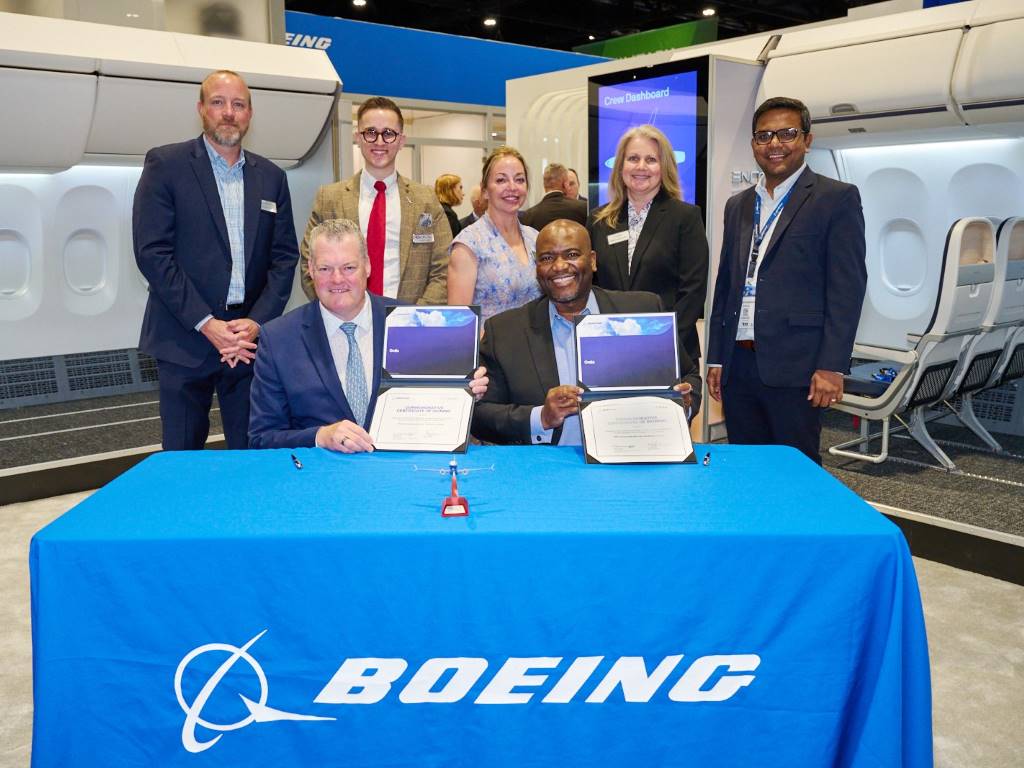A 3D model for business

When Zodiac Seats needed to find model of its business class Aura HD seating for the Aircraft Interiors Expo in Hamburg, it approached Ogle Models & Prototypes to produce a replica that would be just as robust and functional as the real thing. Aerospace Manufacturing reports.
When Zodiac Seats needed to find model of its business class Aura HD seating for the Aircraft Interiors Expo in Hamburg, it approached Ogle Models & Prototypes to produce a replica that would be just as robust and functional as the real thing. Aerospace Manufacturing reports.
More people are flying business class in 2017 apparently than ever before, so the pressure is on for commercial airlines to install seats that fit with their standards and protocols whilst providing the public with the luxurious finish they expect.
Zodiac Aerospace is a leading manufacturer of aerospace equipment and systems for commercial, regional and business aircraft, as well as helicopters and space applications. Its seat division designs, certifies and assembles an extensive portfolio of business class seats.
Zodiac Seats UK approached rapid prototyping and 3D printing specialist Ogle Models & Prototypes, based in Hertfordshire, UK, to help modify and then demonstrate improvements to its new Aura Enhanced design. The new seats are intended for long range, twin aisle aircraft.
Model upgrades
Zodiac wanted to upgrade the design to include extra functionality and increase levels of comfort. To accommodate the various media platforms and connectivity now expected by business passengers, a new prototype had to be made with a perfect finish and every detail accurate to the design.
The challenge for Ogle Models was to produce a full-scale functioning prototype with a precise aesthetic appearance that would be exhibited at The Aircraft Interiors Expo in Hamburg and incorporated into the stage floor within Zodiac’s stand.
There was also a requirement for strength and rigidity within the model as it needed to appear to float above the floor with minimal contact points.
Model board would have been the easiest material to select for the CNC machining process to create the model but it would have been too heavy for the seat. Instead fibreglass was selected as it delivered added strength and drastically reduced the weight. These two factors were vital for the exhibition seat as it was likely to be tested by show attendees but also needed to be packed and moved with relative ease.
Another benefit of this material was the cavity it created for the electrical cabling and wiring – necessary for the lighting, air conditioning and television unit.
“Most important was the surface finish to ensure the model was as visually accurate to the production seat as possible,” says Ogle’s marketing and sales director, Dave Bennion. “The variety of technologies available at Ogle, industrial 3D print, CNC and skilled model makers, allowed the team to tailor each element of the model to its best suited production method. This ensured there was no compromise on durability and quality.”
With its portfolio of 3-, 4- and 5-axis CNC machines at Ogle Models, most of the work was undertaken by a subtractive process.
Working in stereo
However, Ogle Models selected 3D printing to create the trim and detailed parts of the seat using the process of Stereolithography (SLA), working mostly with ExtremeWhite resin.
Stereolithography is an additive manufacturing process that works by focusing a laser onto a bath of photopolymer resin. With the aid of CAD/CAM the laser is used to trace a pre-programmed design on to the surface of the resin. Where the laser makes contact with the resin it hardens the liquid to produce a layer of solid material. When the first layer is completed the bath of resin is lowered so the second layer can be solidified and instantaneously bonded to the first. The process is then repeated until a 3D design is complete.
Bennion explains: “During the additive process, precise cavities were created within the model for the extra detailing, which is why SLA was selected as it could meet an accuracy of ±0.1mm per 100mm which was required. The functional aspects of the model were then added. This included LED mood lighting, flat-screen TV, air conditioning duct and other electrical parts.
“The completed model also needed to be able to split into three sections, which meant that all the cabling had to run under the floor and have connections between each seat and section. This was to limit the physical involvement of anyone who had to set up the model.”
The final stage was to fit and bolt down the model and ensure the seats did not fowl or rub as they ran through their full motion of travel.
Bennion comments: “Precision model making combined with the fabrics and leathers that were supplied by the client, created a visually-accurate model for the exhibition.”
Ogle Models was selected by Zodiac Seats UK based on its reputation for applying extensive knowledge of developing prototypes from initial design conception to final product execution.










